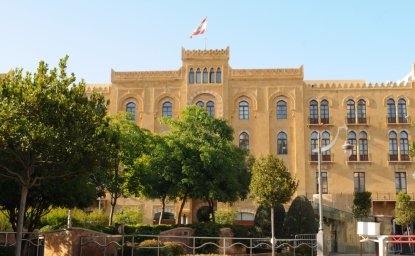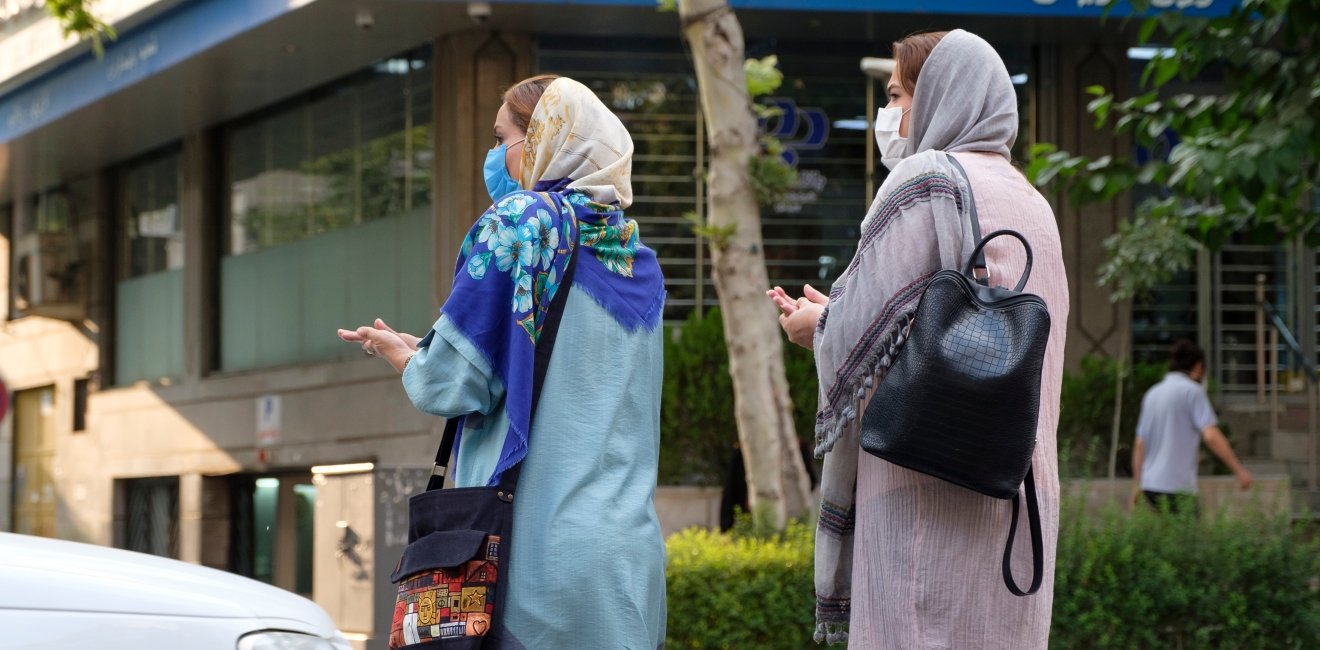
A blog of the Middle East Women's Initiative
First, in order to best understand the negative impact of the coronavirus pandemic on Iran’s labor market, especially the Iranian women’s labor force participation, we need to bear in mind that the challenges of the COVID-19 crisis come against the backdrop of the US-led sanctions that have crippled the country’s economy, leading to severe inflation, unemployment, the demise of the local currency, and accelerated growth of black markets. All this is entwined with the Iranian government’s ongoing mismanagement and corruption within the public and private sector, topped with embezzlement and money laundering, which continue to devastate the economic landscape for ordinary Iranians.
It is also worth noting that women make up 16 percent of Iran’s workforce and in the past decade, despite their exceptionally high rate of participation in higher education, there have only been 300 thousand female jobs added to the economy. While the Iranian government categorically fails to publish accurate and transparent data, according to the country’s ministry of women’s affairs, during the past year, the pandemic has pushed out close to one million of the almost five million female workers—causing a nearly 20 percent drop in an already limited labor force.
However, in brief, Iranian women face three main challenges in a COVID-stricken and already stagnant labor market. First, lack of job opportunities for women as a result of a broken economy, in part due to sanctions, mismanagement, and the country’s isolation from global markets. Second, gender-based discriminatory laws, policies, and mandates, as well as social biases against women, which limit their ability to earn and retain formal employment. And third, the existence of a still “traditional” and “conservative” culture in parts of the country (especially smaller cities and rural areas) against the backdrop of a confined, patriarchal, and religious government that impedes Iranian women who are striving to find an equal space.
As a standalone category, we must also shed light on the excruciating mental health toll that the pandemic has taken on Iranian women, both at home and within the work force.
While over the years, Iranian women have built an exciting track record of advancements within various fields, despite the existing challenges, they remain far behind their male counterparts, and therefore cannot utilize their full potential. As a standalone category, we must also shed light on the excruciating mental health toll that the pandemic has taken on Iranian women, both at home and within the work force. The back-breaking economic challenges and unemployment, piled on top of the many social and domestic challenges, such as a lack of adequate childcare support, limited access to bank loans and rental housing availability for women (especially single/divorced women), domestic physical and psychological abuse, soaring divorce rates, prostitution, drug-use, suicide, and forced marriage, are all the symptoms of a stale labor market for Iranian women.
Prioritization of women’s needs in the workplace
According to government reports, close to 40 percent of rural and vulnerable communities are headed by female breadwinners and the current economic hardships make life even more difficult for the country’s poorest families. To see progress for the most vulnerable households, the Iranian government must implement an unconditional labor policy reform toward women, pave the way for monitoring and therefore mitigating work-place gender-based violence and harassment, enforce adequate rules and regulations within the private and public workspace to protect women from discrimination, and ultimately move away from its archaic ideologies that reduce a woman’s role to “homemakers, mothers, and wives”.
The private sector can in many ways pave the way in creating and promoting policies and mandates that the government otherwise fails to provide, and therefore boost some level of growth for the female labor force.
Within the private sector, society must strive to loosen the chains of isolation forced by years of international sanctions. An increase in the flow of income, resources, and knowledge will enable the Iranian civil society and private sector to focus on fostering young entrepreneurs (especially women), invest in domestically produced goods and services, value the growth of the hospitality sector, and promote female-friendly rules and regulations within the work environment for women (in particular single mothers and single women). The private sector can in many ways pave the way in creating and promoting policies and mandates that the government otherwise fails to provide, and therefore boost some level of growth for the female labor force.
Lastly, I truly believe that Iran is in desperate need of a country-wide policy to tackle the many mental health challenges that currently exist among its citizens, especially the youth, which in part can help foster a healthier workforce in the years to come. People’s disillusionment, anxiety and apathy caused by a mix of political and economic constraints, exacerbated by the pandemic, have had a grave impact on all sectors, which will only lead to a more worn-down and fatigued society and labor force.
A healthcare sector stamped by trauma
Healthcare workers are among those most heavily hit by the scars and mental health wounds of the pandemic. The past year has seen a soaring spike of migration among nurses and doctors; and the death rates among healthcare workers have shaken the society to its core. While officials estimate the death tolls are around 300 healthcare sector workers, unofficial figures reflect a much higher number of deaths across the country.
In early fall, my own family was the victim of such tragedy as we lost my 37-year-old cousin — a beautiful, vivacious, and smart emergency room physician — to a sudden heart failure in her sleep. She, like many other doctors and nurses in the country, was vaccinated, and also similar to the rest of her colleagues, would take on exhausting shifts under the most dire of circumstances in one of Tehran’s main hospitals handling COVID-19 patients. The cause of her heart failure was never known, but it was a too familiar recurrence that her friends and colleagues called “a dark reality within the medical community”.
Over the past few months, local reports have shown a surprising rise in the number of sudden heart-attacks among physicians and nurses. While there is no proven or scientific correlation between their deaths and the trauma, stress, and anxiety caused by the COVID-19 crisis, one can’t help but to notice the lack of support for the country’s frontline workers. We were later told by her colleagues that my cousin would work 24- and sometimes 48-hour shifts with no breaks due to the massive influx of COVID patients. She would see dozens of dozens of deaths per week and witness people’s inability to pay hospital bills, all the while silently coping with the trauma and PTSD of her work. While she did have a job, the repercussions of her work, topped with poor management and non-existent mental health support infrastructure, cut her life short — a life so treasured by her patients, colleagues, and family and so little valued by the system.
Author


Middle East Program
The Wilson Center’s Middle East Program serves as a crucial resource for the policymaking community and beyond, providing analyses and research that helps inform US foreign policymaking, stimulates public debate, and expands knowledge about issues in the wider Middle East and North Africa (MENA) region. Read more

Explore More in Enheduanna
Browse Enheduanna
Women are the Catalysts for Change in Lebanon

How Education Can Empower Young Women in MENA


